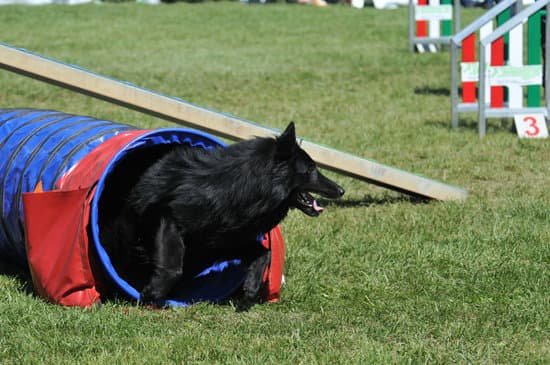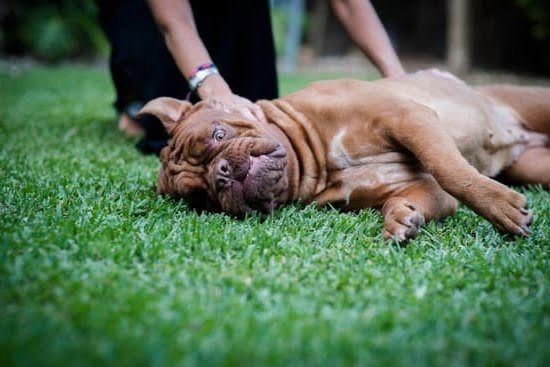Scent training is a valuable skill that can greatly benefit both dogs and their owners. In this article, we will explore the basics of scent training for dogs, including its importance, how to get started, common mistakes to avoid, advanced techniques, and tips for long-term success. If you’ve ever wondered how to scent train a dog or wanted to improve your pet’s tracking abilities, then this guide is for you.
Scent training involves teaching dogs to use their powerful sense of smell to locate specific scents, such as food, drugs, explosives, or even missing persons. This type of training not only taps into a dog’s natural instincts but also provides mental stimulation and a sense of purpose. Additionally, it can be a useful skill for search and rescue operations and other specialized work.
While scent training may seem daunting at first, with the right tools and equipment, along with proper guidance and patience, it can be an enjoyable and rewarding experience for both you and your canine companion. In the following sections, we will delve into the benefits of scent training for dogs and provide a step-by-step guide on how to get started with this valuable skill.
Whether you have a puppy or an older dog, it’s never too late to start scent training and see the incredible results it can bring.
Benefits of Scent Training for Dogs
Scent training is a crucial aspect of a dog’s development and overall well-being. This type of training taps into a dog’s natural instinctual abilities, such as their incredible sense of smell, which is around 10,000 to 100,000 times more acute than humans. By engaging in scent training, dogs are able to harness and strengthen this innate ability, resulting in various benefits for both the canine and their owner.
One of the key advantages of scent training for dogs is the mental stimulation it provides. Just like humans, dogs also need mental exercise to stay sharp and alert. Scent training challenges their cognitive abilities by requiring them to focus on tasks such as identifying specific scents or tracking trails. This mental stimulation helps prevent boredom and can alleviate behavioral issues often associated with under-stimulated dogs.
Additionally, scent training can strengthen the bond between a dog and their owner. Working together in scent training sessions fosters trust and communication between the two parties. Dogs learn to rely on their owners for guidance and support during the training process, ultimately enhancing the relationship between them. Moreover, achieving success in scent training can boost a dog’s confidence and self-esteem, contributing to their overall happiness and well-being.
Overall, incorporating scent training into a dog’s routine can lead to numerous benefits that impact their mental and emotional health positively. A mentally stimulated, confident, and well-bonded dog is more likely to exhibit desirable behaviors and lead a fulfilling life alongside its owner.
Choosing the Right Tools and Equipment for Scent Training
When it comes to scent training a dog, the right tools and equipment are crucial for success. Here are some key considerations when choosing the right tools and equipment for scent training your dog.
Choosing the Right Scent
The first step in selecting the right tools for scent training is choosing the appropriate scents. Whether you’re training your dog for search and rescue, tracking, or hunting, it’s important to select scents that are relevant to the task at hand. For example, if you’re training your dog for search and rescue work, you’ll want to use scents that mimic those of missing persons.
Training Aids and Tools
In addition to choosing the right scents, there are various training aids and tools that can be helpful in scent training. Some common tools include scent detection kits, treat pouches for rewards, and leash and harness sets for control during training exercises. It’s important to invest in high-quality tools that will withstand frequent use and provide reliable results.
Training Environments
Another important consideration when choosing tools and equipment for scent training is the training environment. Depending on the type of scent training you’re doing, you may need specific equipment such as agility obstacles for search and rescue or tracking flags for field work. Consider the environment where your dog will be working, and choose tools that will help them acclimate to those conditions.
By carefully selecting the right scents, training aids, and considering the training environment, you can set your dog up for success in their scent training journey. With the appropriate tools in place, you’ll be well-equipped to teach your dog how to scent train effectively.
Getting Started With Scent Training
Scent training is a fantastic way to engage your dog’s natural instincts and provide mental stimulation. Whether you’re interested in competitive scent work or simply want to teach your dog to better use their nose, getting started with scent training can be a fun and rewarding experience for both you and your furry friend. Here’s a step-by-step guide to help you kick off your scent training journey:
1. Start with the basics: Before diving into complex scent detection exercises, it’s important to begin with the fundamentals. This includes getting your dog comfortable with using their nose and associating scents with rewards. You can start by hiding treats around the house and encouraging your dog to seek them out.
2. Introduce specific scents: Once your dog has mastered the art of finding treats, it’s time to introduce specific scents for them to detect. Common choices include essential oils like lavender, birch, anise, or clove. Dab a small amount of the chosen scent onto a cotton ball or gauze pad and allow your dog to sniff it.
3. Set up simple searches: With the scented item in hand, start setting up easy search scenarios for your dog. Place the scented item in a location where it’s easily visible or accessible at first, then gradually increase the difficulty by hiding it in more challenging spots.
4. Use positive reinforcement: As your dog begins to successfully locate the scented item during searches, make sure to reward them generously with praise, treats, or playtime. Positive reinforcement is crucial in building confidence and enthusiasm for scent training.
Scent training provides mental stimulation for dogs while tapping into their natural abilities. By following this step-by-step guide on how to scent train a dog effectively, you can help unlock your canine companion’s potential and strengthen the bond between you.
Common Mistakes to Avoid in Scent Training
Scent training can be an incredibly rewarding and beneficial activity for both you and your dog. However, there are common mistakes that many owners make when beginning scent training with their dogs. Avoiding these pitfalls will help ensure that your dog is successful in learning how to scent train effectively.
One common mistake in scent training is rushing the process. It’s important to remember that scent training takes time and patience. You cannot expect your dog to learn how to identify and track scents overnight. Take your time and go at your dog’s pace, gradually introducing more challenging scents as they become proficient at each level.
Another mistake is using the wrong rewards or no rewards at all. Positive reinforcement is key in scent training, so it’s crucial to use high-value treats or toys as a reward for your dog when they successfully identify a scent. Without proper rewards, your dog may lose interest in the training or not fully understand what is expected of them.
Lastly, inconsistency in training can hinder progress. It’s important to establish a consistent routine for scent training sessions with your dog. This includes using the same tools and equipment, maintaining a regular schedule, and providing clear direction for your dog during each session.
| Common Mistakes | How to Avoid |
|---|---|
| Rushing the process | Take time and go at your dog’s pace |
| Using wrong rewards or no rewards | Use high-value treats or toys as rewards for successful identification of scents |
| Inconsistency in training sessions | Establish a consistent routine for scent training sessions with clear directions |
Advanced Scent Training Techniques
Once your dog has mastered the basics of scent training, you can move on to more advanced techniques that will challenge and stimulate their senses even further. These advanced techniques are not only fun for your dog, but they also help improve their focus, obedience, and overall scent detection skills.
To take your dog’s scent training to the next level, consider incorporating these advanced techniques into your training regimen:
- Scent Discrimination: Introduce your dog to multiple scents and teach them to discriminate between different targets. This can be achieved by using various scented objects or containers, gradually increasing the difficulty as your dog becomes more proficient.
- Extended Searches: Expand the search area and encourage your dog to search for scents in larger spaces such as parks or fields. This will challenge their ability to stay focused on a specific scent amidst distractions in a new environment.
- Blind Searches: Teach your dog to search for scents without any prior knowledge of where the target scent may be located. This forces them to rely solely on their sense of smell and reinforces their ability to thoroughly search an area.
By incorporating these advanced techniques into your dog’s scent training routine, you can continue to strengthen their olfactory abilities and keep them mentally engaged and stimulated. Remember that patience, consistency, and positive reinforcement are key components of successful scent training.
Additionally, consider enrolling in advanced scent training classes or workshops with professional trainers who specialize in this field. These experts can provide valuable guidance and feedback as you work on refining your dog’s scent detection skills. With dedication and perseverance, you’ll be amazed at how quickly your dog progresses in their scent training journey.
Troubleshooting Common Issues in Scent Training
Working Through Distractions
One common issue that many dog owners encounter when scent training their dogs is dealing with distractions. Dogs are easily distracted by new smells, sounds, and sights, which can make it challenging for them to stay focused on the task at hand. To address this issue, start by practicing in a quiet and controlled environment before gradually introducing more distractions.
Use high-value treats or toys to keep your dog engaged and motivated during training sessions. Additionally, consider using commands or cues to redirect your dog’s attention back to the scent trail when they become distracted.
Dealing With Frustration
Another common issue in scent training is dealing with frustration, both for the dog and the handler. It’s important to remember that scent training takes time and patience, and not every dog will progress at the same pace. If your dog becomes frustrated during training sessions, take a break and come back to it later.
Reward small successes and be consistent with your training approach. Additionally, be mindful of your own frustration as a handler. Dogs can pick up on their owner’s emotions, so staying calm and positive will help create a better training environment.
Addressing Lack of Progress
If you find that your dog is not making progress in their scent training, it may be time to reassess your approach. Consider seeking guidance from a professional trainer or behaviorist who specializes in scent work. They can provide valuable insight into potential reasons for lack of progress and offer personalized advice for addressing the issue.
It’s also important to evaluate whether you are using the right tools and equipment for scent training, as well as being consistent with your training schedule. With persistence and determination, most dogs can develop strong scent detection skills over time.
Maintaining and Reinforcing Scent Training Skills
Once you have successfully scent trained your dog, it’s important to continue reinforcing and maintaining those skills for long-term success. Consistent practice and reinforcement will help ensure that your dog retains their scent training abilities and continues to perform at their best. Here are some tips for maintaining and reinforcing scent training skills in your dog.
First, it’s important to continue practicing scent training on a regular basis. This can be as simple as incorporating short scent training sessions into your daily routine. By regularly exposing your dog to scent training exercises, you can help them stay sharp and focused on the task at hand. Additionally, regular practice will also help solidify their understanding of the scent training process and reinforce their skills over time.
In addition to regular practice, it’s also helpful to introduce new challenges and variations into your dog’s scent training routine. This could involve using different types of scents or hiding spots, increasing the difficulty of the search area, or incorporating distractions into the training environment. By introducing new challenges, you can keep your dog engaged and motivated in their scent training activities while also expanding their skills and capabilities.
Another important aspect of maintaining and reinforcing scent training skills is to provide positive reinforcement and rewards for your dog’s performance. Whenever they successfully locate the target scent, be sure to praise them enthusiastically and offer a high-value reward such as treats or toys.
Positive reinforcement will not only motivate your dog to continue excelling in their scent training but also strengthen the bond between you and your furry friend. Remember that consistency, variety, positive reinforcement are key elements in maintaining an ongoing successful program on how to send train a dog.
Conclusion
In conclusion, scent training is a valuable skill that can benefit both you and your dog in many ways. By understanding the basics of scent training and the benefits it offers, you can make an informed decision to start this journey with your furry friend. Remember to choose the right tools and equipment for scent training, as this will set you up for success from the beginning.
As you get started with scent training, be patient and consistent with your approach. Following a step-by-step guide will help you progress at a pace that is comfortable for both you and your dog. Avoiding common mistakes in scent training will also ensure that you are setting realistic expectations and not hindering your dog’s progress.
Once you have mastered the basics of scent training, consider exploring advanced techniques to take it to the next level. Troubleshooting common issues that may arise along the way and maintaining and reinforcing scent training skills will be essential for long-term success.
Celebrate your dog’s achievements in scent training, as it is a testament to your dedication and hard work as their trainer. With time, patience, and commitment, you can develop a strong bond with your dog through scent training.
Frequently Asked Questions
How Do I Train My Dog to Smell?
Training a dog to use their sense of smell can be done through scent detection training. This involves introducing your dog to different scents and teaching them to recognize and signal when they find the scent.
What Scent to Use to Train Dogs?
When training dogs, commonly used scents include essential oils such as birch, anise, and clove. These scents are easily distinguishable for dogs and can be used to teach them scent detection and tracking skills.
How Do I Teach My Dog to Track His Scent?
Teaching a dog to track their own scent can be achieved through positive reinforcement training. Start by placing a scent trail using a specific scent like a treat or essential oil, then encourage your dog to follow it while rewarding them for doing so. Gradually increase the difficulty of the trail over time.

Welcome to the blog! I am a professional dog trainer and have been working with dogs for many years. In this blog, I will be discussing various topics related to dog training, including tips, tricks, and advice. I hope you find this information helpful and informative. Thanks for reading!





